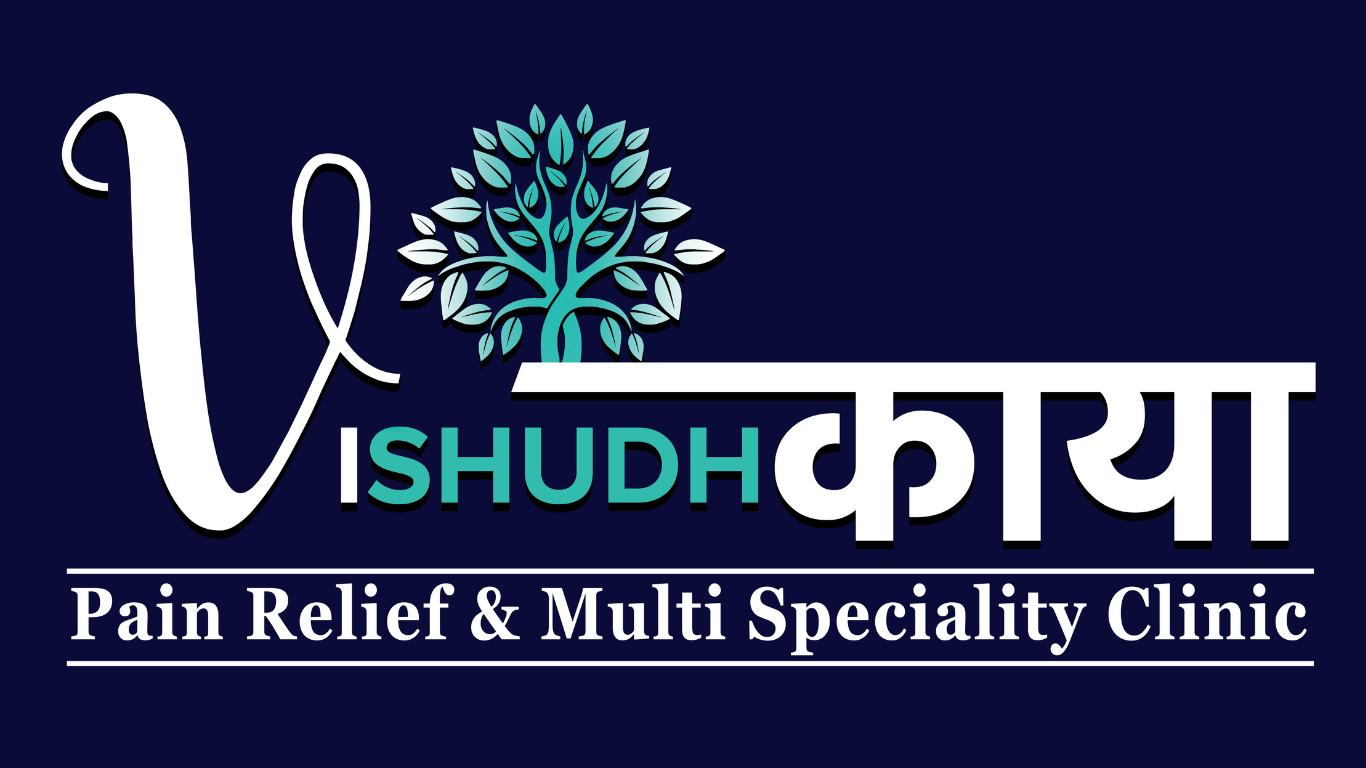Holistic Healing in Homoeopathy
Homoeopathy is a comprehensive and thoughtful approach to medicine that emphasizes the individuality of each patient. This system is deeply rooted in well-established scientific principles, particularly the Law of Similars, and presents a distinctive method of drug therapeutics. Homoeopathy can bring healing in cases where patients have not undergone irreversible physiological changes;
even in more complex situations, it often provides sustained relief from symptoms.

This innovative therapeutic framework was pioneered by Dr Samuel Hahnemann, a distinguished German physician, more than 200 years ago. Since then, homoeopathy has gained significant popularity, particularly in the Indian subcontinent, where it has become an integral part of healthcare. The enduring relevance of homoeopathy can largely be attributed to its effectiveness in addressing a variety of challenging health issues.
At the heart of homoeopathy lies its fundamental principle known as ‘Similia Similibus Curentur,’ which translates to “let likes be treated by likes” in Latin. This concept signifies a unique treatment methodology wherein remedies are prescribed based on the resemblance between the patient’s symptoms and those produced by a drug substance listed in the Homeopathic Materia Medica. The notion of similarity extends beyond just the obvious symptoms; it encompasses various factors including the specifics of the presenting complaints, the overall constitution and temperament of the patient, as well as the underlying causes of their condition. Importantly, homoeopathy does not rely on matching the remedy to a specific disease diagnosis, focusing instead on the holistic aspects of the patient’s experiences and health.
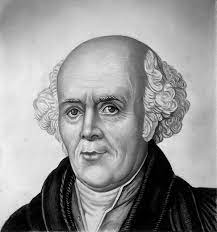
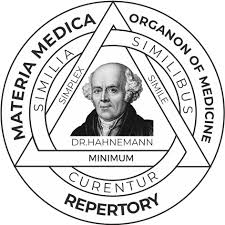
Beyond Symptoms: Why Deep Case-Taking is the Key to True Healing in Homeopathy
It is being said that “A well-taken case is half cured” and there are many reasons why a case should be taken properly which are as follows:
1. Familiarity with the Patient’s Personality Type – During your initial consultation at a Homeopathic Clinic, the physician undertakes a comprehensive assessment of your personality type, which plays a crucial role in determining the appropriate medication or remedy for your condition. Understanding the patient’s personality is an essential aspect of homoeopathic medicine, as outlined in the materia medica. Homeopathy acknowledges that even if two individuals present with identical symptoms, their treatment plans will differ significantly based on individual characteristics. This personalized approach is rooted in the belief that each person’s mental and physical health profiles influence their healing process. Thus, assessing personality types—encompassing emotional tendencies, behavioural patterns, and lifestyle choices—is vital for crafting a tailored treatment strategy that aligns with the individual’s unique needs.
2. Illuminating the Root Cause of Disease – Homeopathy distinguishes itself from conventional medicine by emphasizing the importance of identifying and treating the root causes of ailments rather than just alleviating symptoms. This foundational principle is key to the homoeopathic approach, which aims to provide long-lasting relief and overall wellness. For instance, when a patient presents with an allergy, a skilled homoeopathic practitioner will delve deeply into the patient’s medical history and current lifestyle to uncover potential underlying triggers and causes. This thorough understanding enables the practitioner to create a personalized treatment plan tailored to the specific nuances of the patient’s condition, ultimately leading to more effective and sustainable results.
3. A Wide Array of Medication Options – Homeopathy offers a vast array of medications, each specifically chosen based on the patient’s condition and overall constitution. For example, in treating fever, the homoeopathic doctor will consider various factors—such as the type, duration, and accompanying symptoms of the fever—as well as the patient’s sensitivities and history. This individualized approach is pivotal in homoeopathy, as it acknowledges that no two individuals respond similarly to treatment. As a result, practitioners strive to provide precise and differentiated remedies, ensuring that each treatment plan addresses the unique physiological and psychological attributes of the patient, thereby optimizing the healing process.
4. Understanding Mental and Emotional Health – Homeopathy places significant emphasis on the connection between physical health and mental and emotional well-being. Each individual’s mental and emotional landscape is distinct, which can profoundly impact their overall health. Homoeopaths consider these factors critically when developing treatment plans, acknowledging how emotional conditions—such as stress, anxiety, or depression—can manifest physically. By addressing both the mental and emotional dimensions of health, homoeopathy seeks to restore balance and harmony, fostering holistic well-being. This comprehensive approach allows for greater insight into the patient’s complete health profile, thus enhancing the effectiveness of their treatment.

Numerous evidence-based studies support the efficacy of homoeopathy as a viable and effective method for addressing a wide range of health issues. Homeopathy is particularly valued for its focus on safety and effectiveness, as well as its commitment to minimizing harmful side effects, making it an appropriate choice for individuals across all age groups. The holistic nature of homoeopathy ensures that patients not only find relief from their symptoms but also achieve a state of overall wellness, making it a compelling option for those seeking alternative healthcare solutions.
The Art of Case-Taking: Crafting a Personalized Path to Healing
One of the foundational elements of homoeopathic practice is the meticulous process of history-taking, which serves as the bedrock for effective treatment. During this initial phase, the homoeopathic practitioner engages with the patient to gather a comprehensive medical history. This encompasses not only the patient’s current symptoms—what they are experiencing presently—but also delves into their past medical conditions, any previous treatments, and relevant family medical history that may shed light on hereditary predispositions to certain illnesses.

In addition to the medical components, the practitioner will inquire about the patient’s lifestyle choices, including dietary habits, physical activity levels, sleep patterns, and any significant stressors in their life that might affect their overall well-being. Emotional and psychological states are also crucial to understand, as they can profoundly influence physical health. The aim of this thorough inquiry is not merely to compile data but to cultivate a holistic picture of the individual’s health, considering both physical ailments and contextual factors that contribute to their current state.
With this wealth of information, the practitioner can craft a highly personalized treatment plan tailored to the unique needs and characteristics of the patient. Homeopathic remedies are distinctive in that they are often administered in extremely diluted doses, which can be provided in various forms, such as lactose pellets, liquid drops, or topical creams. These remedies are believed to stimulate the body’s innate healing abilities by resonating with the individual’s specific symptoms and overall constitution.
To further ensure a positive experience for patients, homoeopathic practitioners take deliberate steps to create a safe and welcoming environment. This includes actively listening to patients, validating their feelings, and encouraging them to express their concerns without fear of judgment. The practitioner fosters a non-judgmental atmosphere where openness is encouraged, allowing patients to share intimate details about their lives and health without hesitation.
Open-ended questions are a critical tool in this dialogue, as they prompt patients to elaborate beyond simple affirmations or negations. For instance, instead of a closed inquiry such as,
“Do you have any pain?”
The practitioner might ask,
● Can you describe the pain you’re experiencing?
● What does it feel like, where is it located, how intense is it, and
● How long have you been dealing with this sensation?”
This approach not only uncovers vital details regarding the pain’s characteristics but can also draw out information related to any associated symptoms the patient might be experiencing, which could be important for diagnosis and treatment planning.
By employing these open-ended questions, homoeopathic practitioners can gain invaluable insights into the nuances of the patient’s condition. This depth of understanding allows for a truly customized treatment approach, leveraging the unique aspects of each individual to enhance the potential for successful healing and recovery. Ultimately, this diligent process underscores the essence of homoeopathy: recognizing and treating the individual as a whole rather than simply addressing isolated symptoms.
How In-Depth History Unlocks True Healing in Homeopathy
The primary objective of case-taking in homoeopathy is to thoroughly uncover the totality of symptoms experienced by the patient, encompassing a holistic view of their health. This process begins with identifying the chief complaint, which is the main health issue prompting the patient to seek treatment. However, it goes far beyond just this singular complaint.

In addition to the chief complaint, the homoeopath meticulously explores the modalities—that is, the specific factors that may exacerbate or alleviate the symptoms. These can include weather changes, time of day, emotional states, or certain physical activities that are relevant to the patient’s experience.
Furthermore, it is crucial to consider concomitant symptoms—these are additional symptoms that may present alongside the chief complaint. By understanding these accompanying symptoms, the homoeopath can gain deeper insights into the nature of the patient’s condition.
Additionally, a comprehensive assessment of the patient’s general state of health is essential. This includes evaluating their medical history, lifestyle factors, emotional well-being, and overall psychological state. Homoeopaths recognize that each patient is a unique individual, and they strive to understand how these physical and psychological elements interact and contribute to the patient’s health.
Through this extensive case-taking process, the homoeopath aims to create a complete picture of the patient’s health, ultimately guiding them toward a more tailored and effective homoeopathic treatment plan.
Essential Elements for Accurate Homeopathic Diagnosis
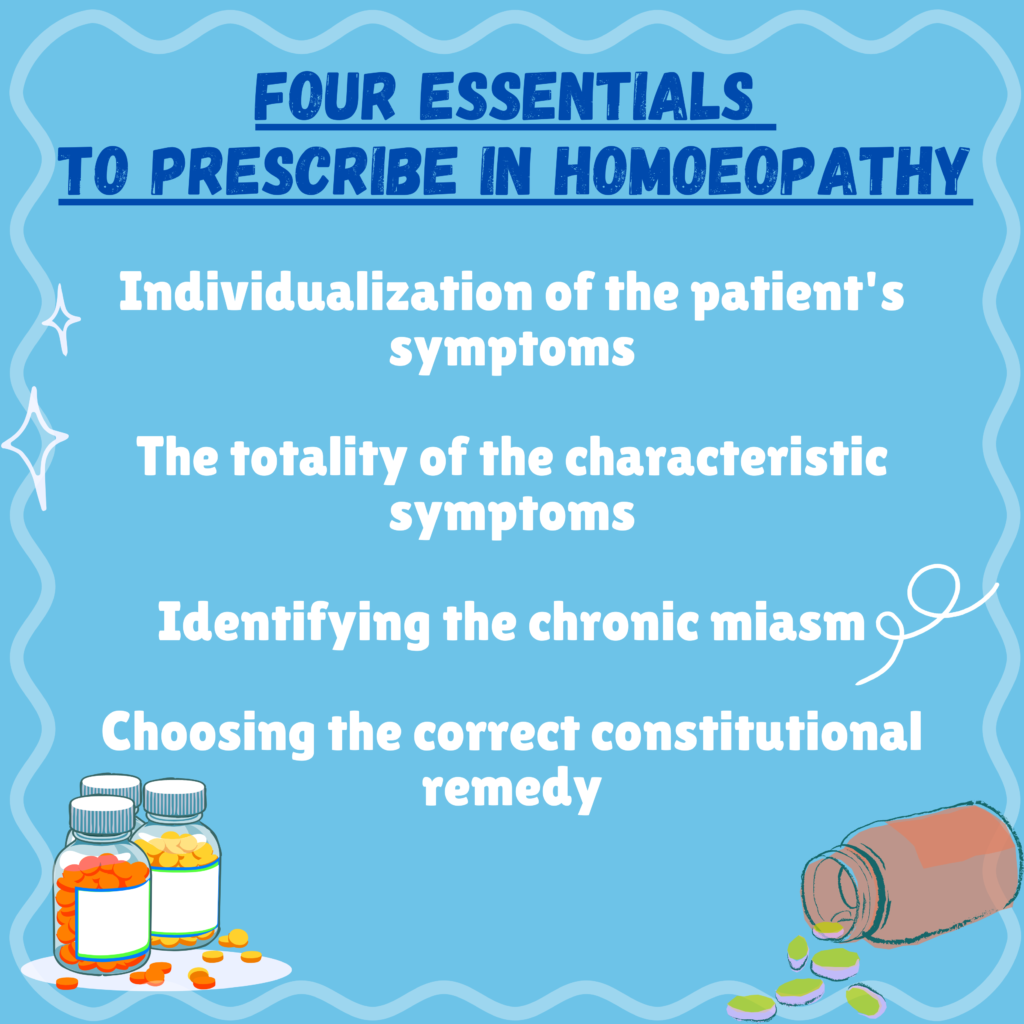
1. Chief Complaints: This is the primary reason the patient seeks homoeopathic treatment and serves as a guiding point for the homoeopath to understand the main issue affecting the patient.
2. History of Present Illness (HOPI): This involves a detailed exploration of how the symptoms developed, their progression, and any factors that influence their intensity or frequency.
3. Past Medical History: This includes information about previous illnesses, surgeries, and medical treatments, which provide valuable insights into the patient’s health background.
4. Family History: This accounts for genetic predispositions and familial diseases that might affect the patient’s current health condition.
5. Mental and Emotional State: Understanding the patient’s emotional temperament, stressors, fears, and coping mechanisms is essential, as these factors are crucial in selecting the appropriate homoeopathic remedy.
6. Physical Examination: While not as exhaustive as in conventional medicine, a basic physical examination may complement the case-taking process by noting observable physical symptoms.
7. Modalities: This involves identifying factors such as the time of day when symptoms occur, aggravating or alleviating influences (like weather, food, or specific activities), and associated symptoms to provide context to the main complaint.
8. Constitutional Assessment: This step identifies the patient’s overall constitution and general health patterns over time.
9. Patient History: This encompasses a thorough exploration of the patient’s past medical history, focusing on significant illnesses, surgeries, injuries, and any chronic conditions. Family medical history is also important to understand potential genetic predispositions and hereditary factors affecting the patient’s health.
10. Presenting Symptoms: Homeopaths conduct a detailed investigation into the symptoms the patient is currently experiencing, paying attention to specific details such as the location, sensation (e.g., burning or stabbing), modalities (factors that worsen or alleviate symptoms), and concomitant symptoms (additional symptoms occurring alongside the main complaint).
11. Concomitant Symptoms: These are additional symptoms that accompany the main complaint. Homeopaths consider these symptoms as they contribute to a comprehensive understanding of the patient’s overall state, assisting in differentiating between various remedies.
12. Mental and Emotional State: Homeopathy acknowledges the interconnection between mental, emotional, and physical health. Therefore, understanding the patient’s emotional state, temperament, stressors, fears, and overall mental well-being is crucial. Specific mental symptoms, such as anxiety, depression, irritability, or fears, often serve as key indicators in remedy selection.
13. General Physical Examination: Although homoeopathy mainly relies on the patient’s subjective symptoms and experiences, a general physical examination may still be performed to note any objective signs or findings that could aid in understanding the overall case.
14. Lifestyle and Habits: Factors such as diet, sleep patterns, exercise routines, work environment, and lifestyle habits (such as smoking or alcohol consumption) are considered since they can influence overall health and the expression of symptoms. These insights guide the homoeopath in selecting an appropriate remedy.
15. Special Questions: Depending on the nature of the case, specific questions may be posed to delve deeper into particular systems or conditions, ensuring a comprehensive understanding of all aspects of the patient’s health.
16. Patient Goals and Expectations: Understanding the patient’s goals and expectations for treatment helps align the homoeopathic approach with their needs. This fosters a collaborative relationship between the homoeopath and the patient throughout the healing process.
17. Analysis and Repertorization: After gathering all relevant information, the homoeopath analyzes the symptoms and selects a suitable remedy. This often involves using repertories (reference books listing symptoms and corresponding remedies) to find the most appropriate match.
18. Follow-Up: Homeopathic treatment typically involves follow-up appointments to assess the patient’s response to the remedy and to make any necessary adjustments to the treatment plan.
Why Choose Vishudh Kaya Pain Relief and Multi-Specialty Clinic for Homoeopathy?
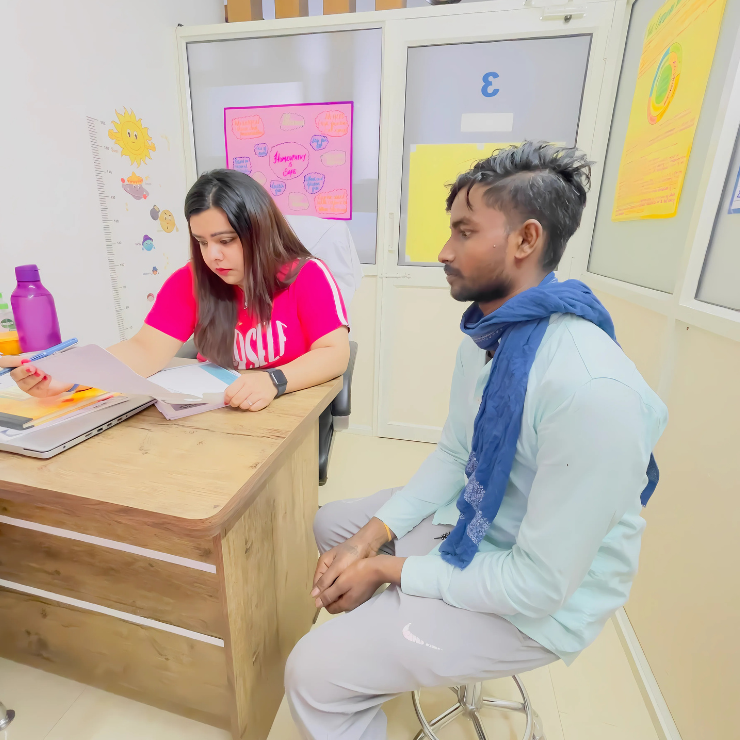
At Vishudh Kaya, our dedicated team of homoeopathic practitioners brings years of extensive experience to the table. Each practitioner is not only highly qualified but also possesses a profound understanding of homoeopathic principles and their real-world applications. This wealth of experience empowers our team to conduct precise assessments of your health condition, uncover the underlying causes of your ailments, and develop an individualized treatment plan that is most effective for your unique situation.
❖ We Prioritize Personalized Care: Your health journey at Vishudh Kaya is uniquely yours – you are far more than just a number to us. Our seasoned homoeopathic practitioners invest time in actively listening to your concerns, delving into your medical history, and performing comprehensive evaluations. This commitment to personalization ensures that your treatment plan is specifically tailored to meet your distinct needs, enhancing the likelihood of a successful healing process.
❖ We Strive for Success and Positive Outcomes: The extensive experience of our team translates into a remarkable record of successful treatments and satisfied patients. Our practitioners are skilled in managing a broad spectrum of both acute and chronic conditions by employing foundational homoeopathic principles. This expertise not only helps alleviate symptoms but also guides patients toward achieving lasting relief and an improved quality of life.
❖ We Offer Concise and Impactful Solutions: Take advantage of the rich expertise our seasoned homoeopathic practitioners have to offer. Their depth of experience guarantees that you will receive accurate diagnoses and well-structured, effective treatment plans tailored for a variety of health conditions. With our focus on impactful solutions, we aim to provide you with the best possible path to wellness.
Conclusion
To sum up, the process of case-taking in homoeopathy signifies a deep dedication to comprehending the entirety of a person. By merging physical symptoms with mental and emotional conditions, homoeopaths devise tailored treatment strategies that align with the individual’s distinctive constitution. This comprehensive approach not only addresses ailments but also empowers patients to engage actively in their healing journey, enhancing vitality and wellness on all levels of their existence. Proficient case-taking in homoeopathy transcends mere clinical questioning; it fosters a therapeutic rapport founded on trust and empathy. Patients are encouraged to candidly express their worries, fears, and life stories, nurturing a profound understanding of their health experiences. Instead of simply suppressing symptoms, homoeopathy seeks to tackle the underlying causes of illness. By activating the body’s self-healing abilities, homoeopathic remedies promote enduring recovery and resilience. This method alleviates immediate discomfort while also supporting overall health and wellness.
Start Your Healing Journey Today
Are you seeking comprehensive and natural remedies for your pain or health issues? At Vishudh Kaya Pain Relief and Multispecialty Clinic, we prioritize your overall well-being by addressing not just the symptoms but the root causes of your concerns. Our dedicated team utilizes thorough history-taking and specialized homoeopathy to create a personalized care plan just for you. Discover the transformative power of tailored healing approaches designed to support your unique journey towards health and wellness!


